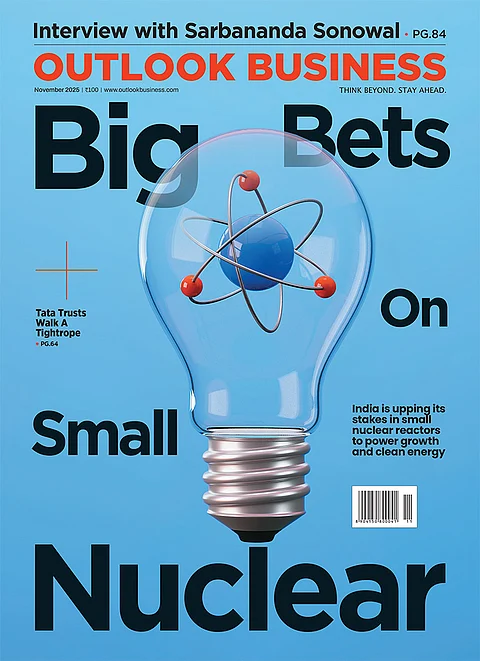Merchant Discount Rate (MDR), the fee paid by merchants for processing digital payments, should also apply to UPI transactions as per Amazon Pay chief executive Vikas Bansal. “Overall, it is important. In any form of commerce, value is created and those enabling it should be compensated,” he says.
Bansal adds that UPI has simplified life for merchants by allowing them to accept digital payments and reduce the costs associated with handling cash. “There should be some reasonable MDR put in place for UPI,” he adds.
On being asked whether MDR could slow down adoption or hurt payment volumes, Bansal says that if we make it prohibitive or too high, obviously there will be an impact.
“So I think the key would be to keep it reasonable and sustainable so that it works for everyone. That is very important because the moment you make it too restrictive or too high, it will not work,” he adds.
In a conversation with Outlook Business, Bansal discusses Amazon Pay’s performance and future strategy, the reasons behind its slip to eighth place in UPI transactions in March from sixth earlier, the recent acquisition of Axio and more.
Edited Excerpts
Amazon Pay’s loss fell 39% in 2023-24. When do you expect it to turn profitable and what can we anticipate for 2024-25?
Forward-looking numbers we do not disclose. But one thing I can tell you is that every business is ultimately in the business of making money and that is something we are working on with a long-term plan. While we continue to excite customers and expand our product offerings, we are equally focused on making it a sustainable business. Looking at the numbers we feel very good about our trajectory in terms of both growth and profitability. That is all I can comment on for now but things are really in good shape.
Amazon Pay fell to 8th in UPI transactions in March from 6th. What caused this drop, and can the festive season help it recover
We think of Amazon Pay not just as a UPI app. It is a holistic payment app where customers can use credit cards including Amazon Pay credit card, buy now pay later, use their wallet or UPI. Unlike many other services we do not focus only on UPI.
UPI is more of a byproduct of our focus. Today 60–70% of transactions are small-ticket payments at long-tail stores through scan and pay. Hence, we are very excited about our overall growth which has been strong.
That number is about 60–65. We do not play in that space as much because customers can already use Amazon Pay at any QR code. Our QR codes are deliberately focused on large enterprise merchants.
Our focus has been on online and offline large enterprise merchants. Naturally our share in other segments looks smaller. We are thinking long term: once we grow share with online merchants and all payment methods, we can expand to more offline stores and the long tail.
That is why this metric comes up. When 60–70% of UPI payments happen in small stores like paanwalas, chaiwalas and kirana shops our share looks lower. Think of us as a holistic solution. This is where we are growing our customer base and expanding our payment offerings.
From a consumer’s or a seller’s perspective how should one look at Amazon Pay? If you had to categorise it, how would you explain it?
We continue to double down and grow because our focus has been on whether we are bringing new products and services. Are we introducing innovative solutions to solve real needs? Are we growing our customer base? As a result, are we growing our overall business? I think the answer to all of these questions is yes.
I do not get up every day and ask, “What is my UPI market share today?” That is not what I worry about. What I focus on is whether we are growing and investing overall. To that point, if you trace back some of our customer numbers from three or four years ago to where we are today, you will see the difference.
Take Amazon Pay Wallet, which is our key Amazon Pay Balance offering. We have doubled our customer base year over year. Doubled. These are not numbers in the thousands or lakhs—they are in the tens of lakhs. To me, what is very important is whether we are launching new products, receiving strong customer feedback, expanding our customer base and growing our business. Market share and other things will follow.
How does the Axio acquisition shape Amazon Pay’s long-term vision and its focus on the NBFC space?
Today our mission is to really make payments and financial services simple and help fulfil aspirations. If you think about it today, we work with a large set of banks and non-banks and we have been working with Axio, a credit and finance platform, for the past six or seven years. Then we launched this unique offering of Amazon Pay Later in partnership with Axio, which helps customers manage and extend their budget.
This acquisition allows us to expand the offering, increase repayment options and bring new constructs like no-cost EMI. For example, three months no-cost EMI, which is not available today, addresses one of the larger pain points.
For Axio, it provides closer collaboration along with the distribution and reach that Amazon has. It is a natural win-win for both of us. This acquisition will help us expand more offerings while also tapping into their risk management capabilities.
This does not mean we will stop working with others. Today we do a lot of business with Bajaj Finance with EMI and several other banks. All those partnerships with banks and NBFCs will continue to exist. Axio will be just one partner.
Even in the US, Amazon has its own retail business but sellers have a much higher share than Amazon’s own retail. The same philosophy applies here—our ethos is to work with all partners. Our focus will remain on working with other partners as much as it will on our own entity and that will continue.
How important is MDR for sustaining the payments ecosystem, given the Payments Council of India has urged its reintroduction on UPI?
I would say it is important. The reason is that in any commerce, there is always value being created. For that value, the player should get paid.
In this case, merchants’ lives have become simple. They are able to accept digital payments and save on the cost of cash. At the same time, investments are going into payment companies with banks and other players.
There should be some reasonable MDR for UPI. That is what I would say at this point.
Has the government been receptive to these discussions? Do you expect any policy soon on this?
Our role is to continue engaging with the regulator and the government. We have made representations and will keep doing so. Then we will see how things progress.
Do you think introducing MDR on UPI could hurt payment volumes or slow adoption among merchants and consumers?
No, I think it is just about the convenience right because the convenience and the value is so good that you do not want to make it too prohibitive.
If we make it prohibitive or if we make it too much obviously there will be an impact. So I think the key would be to keep it reasonable and sustainable so that it works for everyone—for merchants, banks, payment companies all of them. That is very important because the moment you make it too restrictive or too high then it will not work.
Earlier this year, Amazon infused ₹350 crore into Amazon Pay. Do you plan to deploy more funds, and how will these be utilized?
One thing is that we are here for the long term. So we are very committed to the long-term success of this country, to really digitize the country. As part of this, we will continue to put investments, and these investments go in building technology.
Now we're very heavily focused on the next generation of payments. How do we simplify further experiences? How do we move from OTP to biometric-based payments? How do we then go into voice-based payments, so you just have to speak to pay, not use OTP or biometrics to pay?
Also, we continue to invest in more machine learning and AI solutions to bring in more and more ways to protect customers from fraud. For example, fraud is something that, anytime there is growth, also increases. And that’s where we’re putting investment, to detect in real time with better detection mechanisms, so we can protect customers, sellers, and businesses as well.
So all of these investments are going into infrastructure building and strengthening the ecosystem for our shareholders.
Last year reports suggested Amazon might make Amazon Pay a standalone app. With the festive season approaching, is this being actively explored?
I will not comment on the speculation but one constant for us is listening to customer feedback. If customers point out issues, suggest experience improvements or highlight what is working better, we think about how to make it even better. We continue to evaluate that and in the coming months and quarters you will see what we decide to do next.





























